本文由Planergruppe授权mooool发表,欢迎转发,禁止以mooool编辑版本转载。
Thanks Planergruppe for authorizing the publication of the project on mooool. Text description provided by Planergruppe.
Planergruppe:“在农村或城市中都有被遗忘的风景——这是一个人迹罕至的地方,感受不到动植物的生命活动。德国埃森前煤矿焦化厂远离城市,通达度不高,而且周围还设有围墙和栅栏。公园最初有结构上的变化,但景观设计团队还未参与到煤矿焦化厂公园的设计之中,尽管如此,这个位于工业遗址周边的公园还是成为了一个多层面的开放空间,有森林、灌木丛、湖泊和开阔的空间,还可以看到树木掩映的道路。”
Planergruppe: “There are landscapes in the countryside or in the midst of cities which have been left behind and forgotten – a no-man’s-land where the life of animals and plants remains hidden and people are rare. The landscape of the former Zollverein colliery is situated away from the city, difficult to reach, and secured with walls and fences. Zollverein Park emerged over just a few years amidst collieries and coking plants. Admittedly, there were structural changes, but landscape designers with their teams of gardeners did initially not take part in it. Despite or even because of this, everything is ever so magnificent and at the same time strange. A multifaceted open space arose in the immediate surroundings of a unique industrial monument – a park with light forests, dark scrub, lakes, and open, wide spaces for sighting the tree-shaded paths.”
▼视频 Video
以上设计公司Planergruppe在1994年对煤矿焦化厂公园的看法。94年之后,煤矿焦化厂附近区域开始迅速发展,人们可以进入到公园还未被开发的区域之中。2005年,设计团队在煤矿焦化厂公园的设计竞赛中将两种不同的观点联系在一起:强调被遗忘景观的特征和品质,并为矿业联盟的活动提供必要的新的、多层面的和强大的基础设施。
This has been our view on Zollverein Park in 1994. Subsequently, the area of the Zollverein colliery and coking plant took a rapid development. The Zollverein Park was made accessible and visitors were allowed to enter the unexplored site. The concept with which we took Zollverein Park into architectural competition in 2005 linked two different views together: carefully emphasizing the existing characteristics and qualities of a forgotten landscape, and making available necessary new, multifaceted and robust infrastructure for new activities at Zollverein.

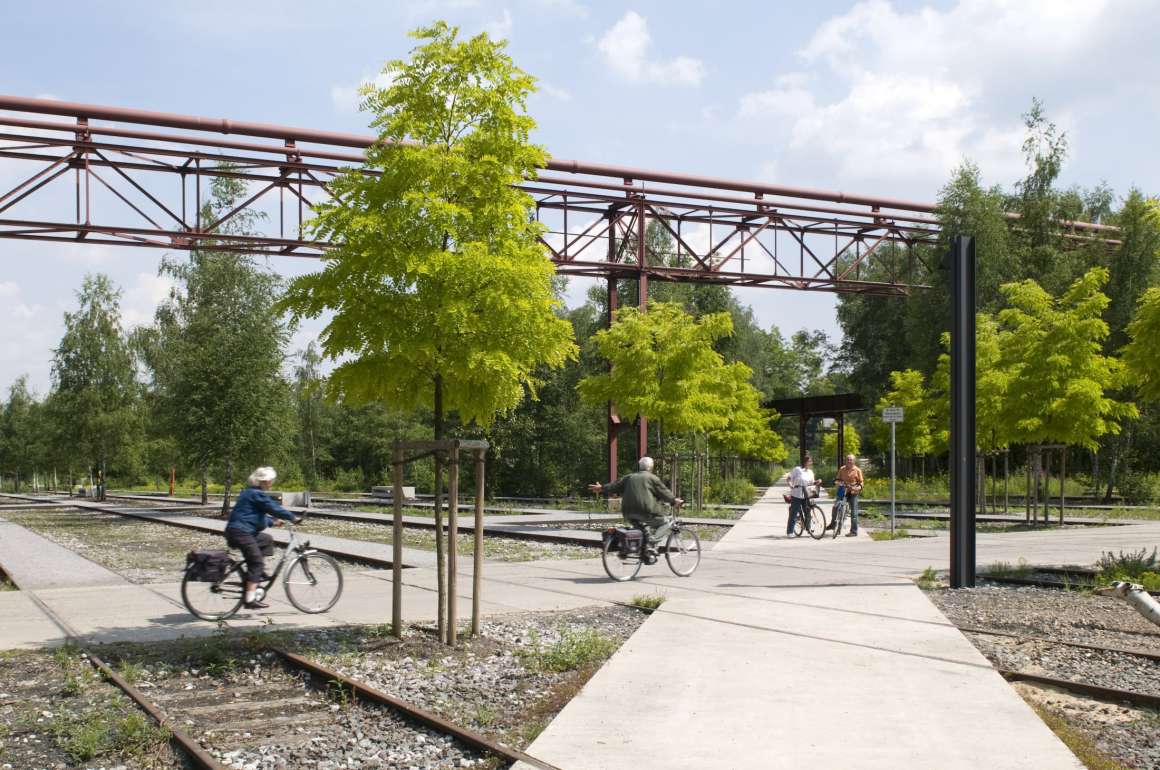
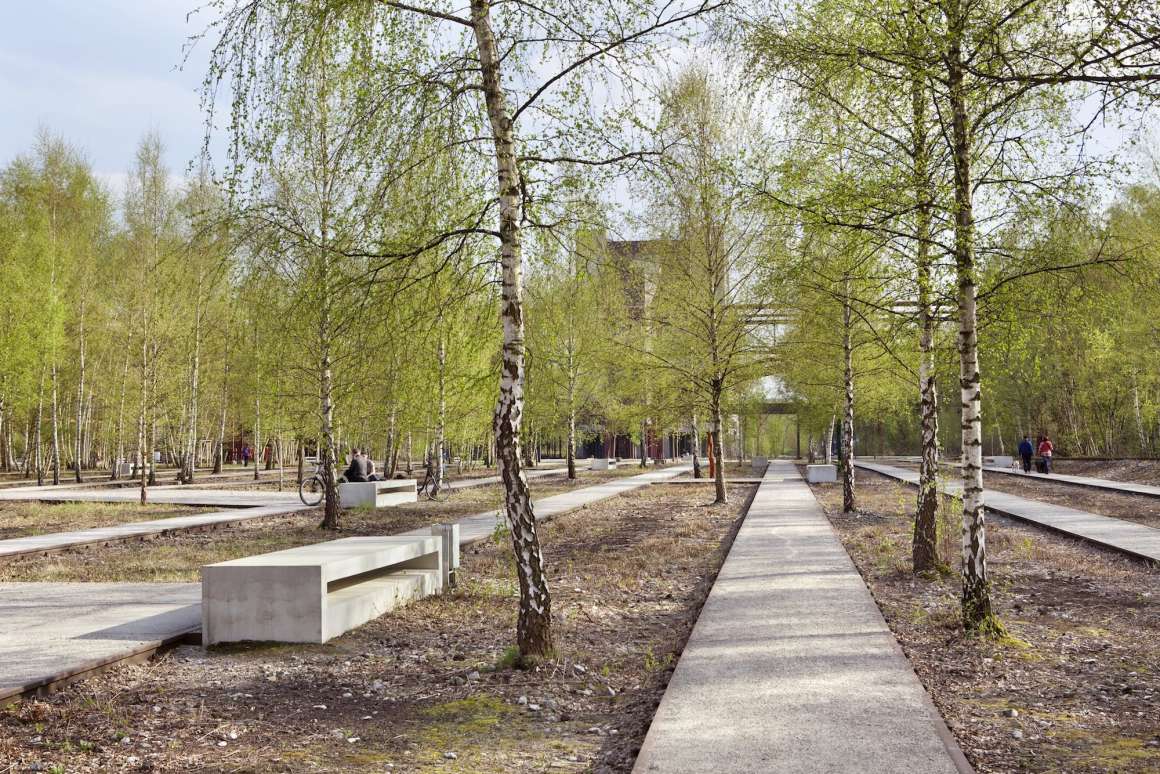
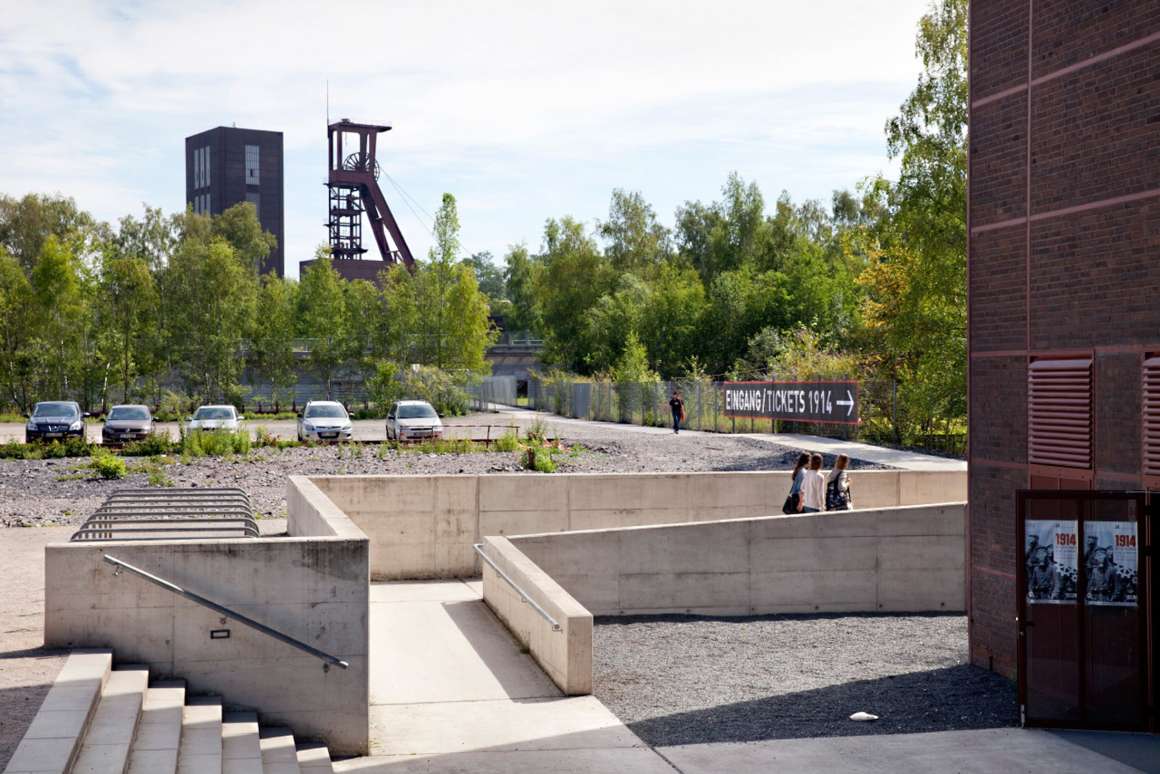
公园设计的手法基于几个原则:强调建筑整体性,采用克制的景观设计方法,减少元素和材料的类别,尊重现有资源,保护工业遗产,提升游客活动空间,使封闭的工业场所向开放的公共空间转变,增强园区体验感。煤矿焦化厂公园是在工业场地上发展起来的,它并不否定场地自身的起源,只是稍微增加了一些元素。工业建筑清晰、简洁的形式结构与各种自然植被之间的鲜明对比是场地的特色。通过对场地系统和持续的维护,煤矿焦化厂公园逐渐形成了自己的面貌。
Our approach and handling of Zollverein is based on several principles: emphasis on the architectural ensemble, restraint in landscape design, reduction of elements and materials, respect for the existing, preservation of industrial origin, acquisition of space by the visitors, making the transformation from a hermetically sealed-off industrial site to a public tourist highlight visible and experience-able. Zollverein Park – which has developed on industrially embossed terrain and does not deny its origins by gently adding and classifying – keeps its unique selling point by the high-contrast interacting between the clear, simple forms and structures of industrial architecture and the variety of spontaneous vegetation. The shape and outer appearance of Zollverein Park are being developed by a systematic and continuous maintenance.
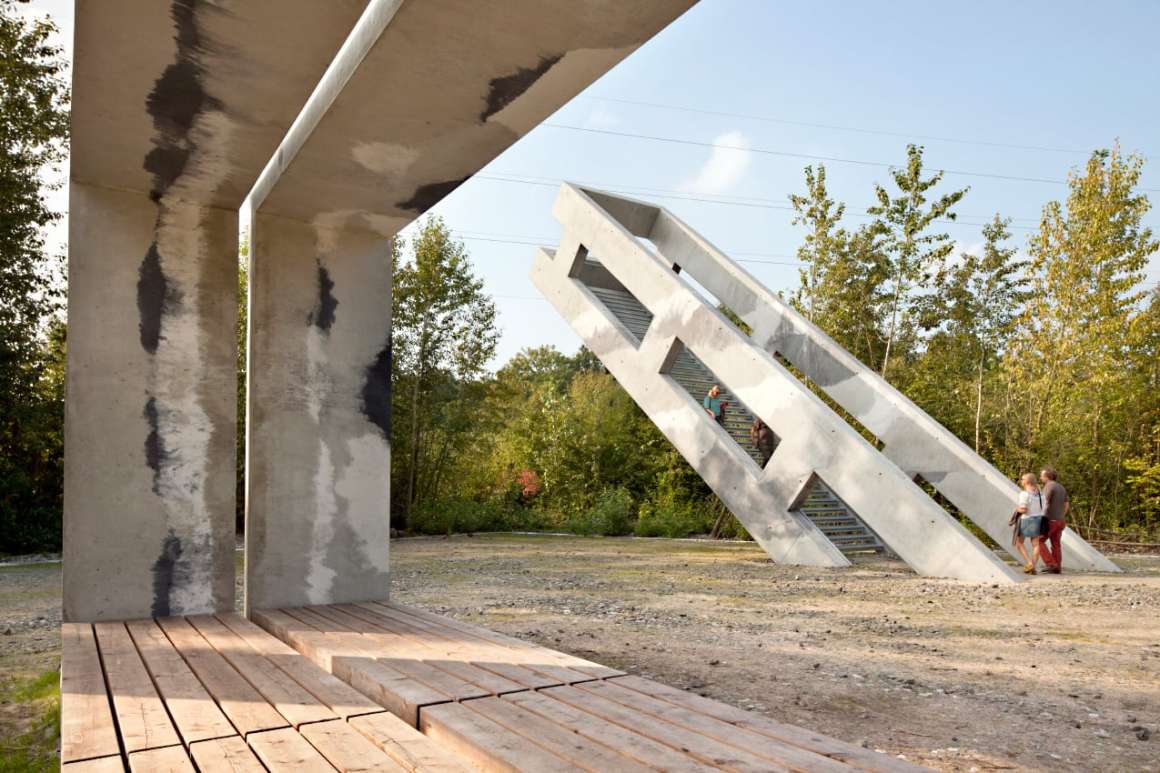
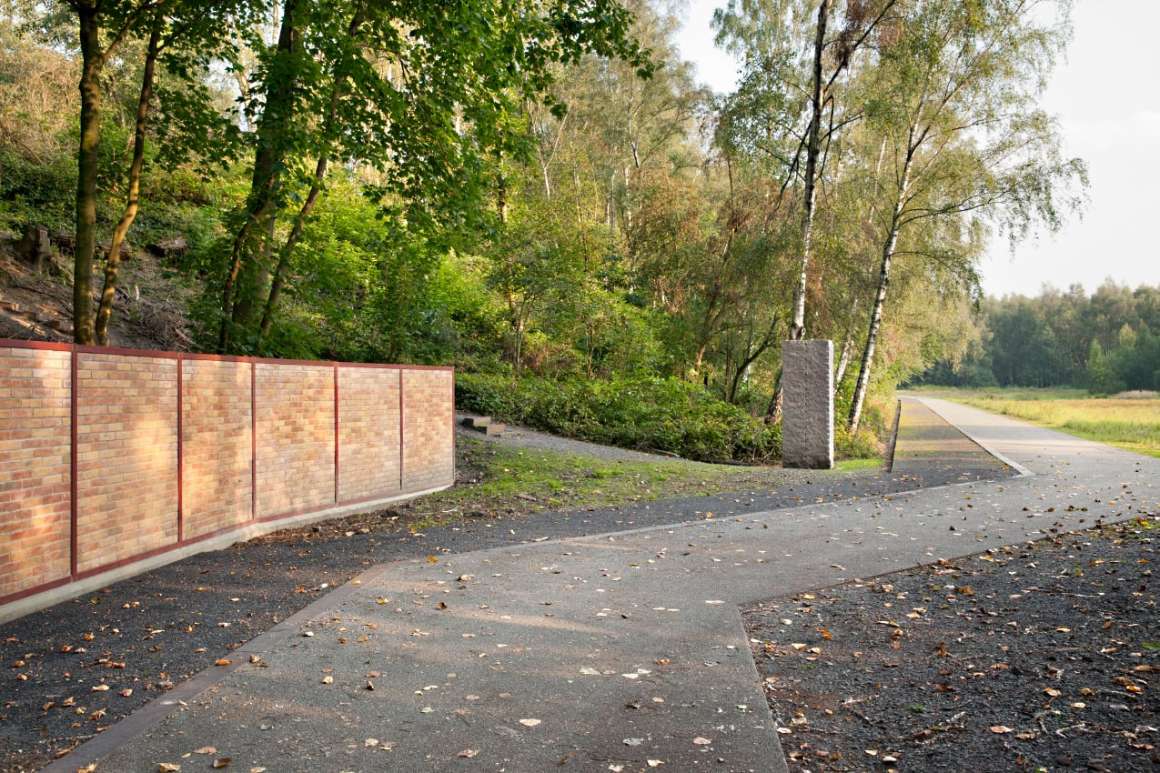
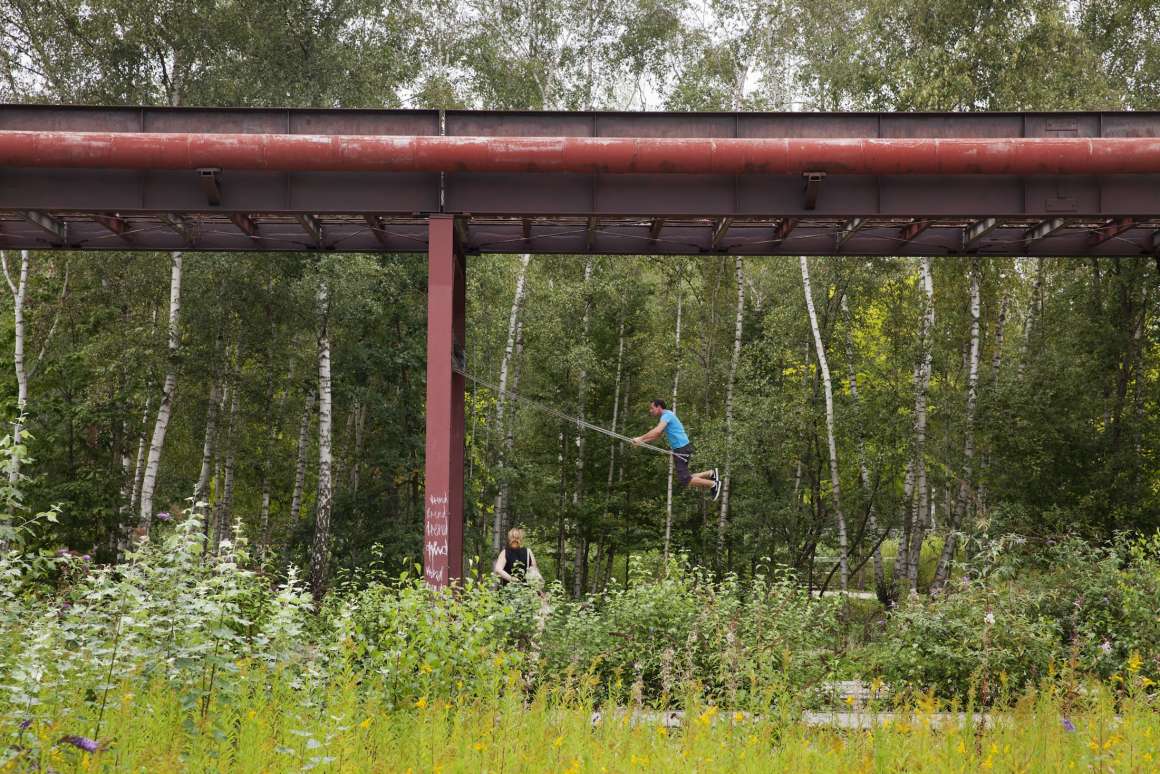
长期的维护发展理念与公园各项要素的逐步实现是相辅相成的,公园正发展成一个随时可以探索的地方,不过这需要一段较长的时间。这不是要建立一个类似于博物馆般的工业景观,而是要用已经存在的元素构成一个景观,这个概念囊括了场地历史的和当前的发展状况,并为未来的发展提供了指向——场地是有诠释意味和功能性的。
The long-term concept of development by maintenance goes hand in hand with the gradual realization of the elements of Zollverein Park. Over a relatively long period, a forbidden zone develops to a park which is ready to get explored. It is not about establishing a museum-like industrial landscape, yet about composing a landscape with already existing elements; this concept consciously includes historical and current developments and signs in a credible manner and offers surface and room for future developments and purposes – open to interpretation and offering a pragmatic dysfunction.
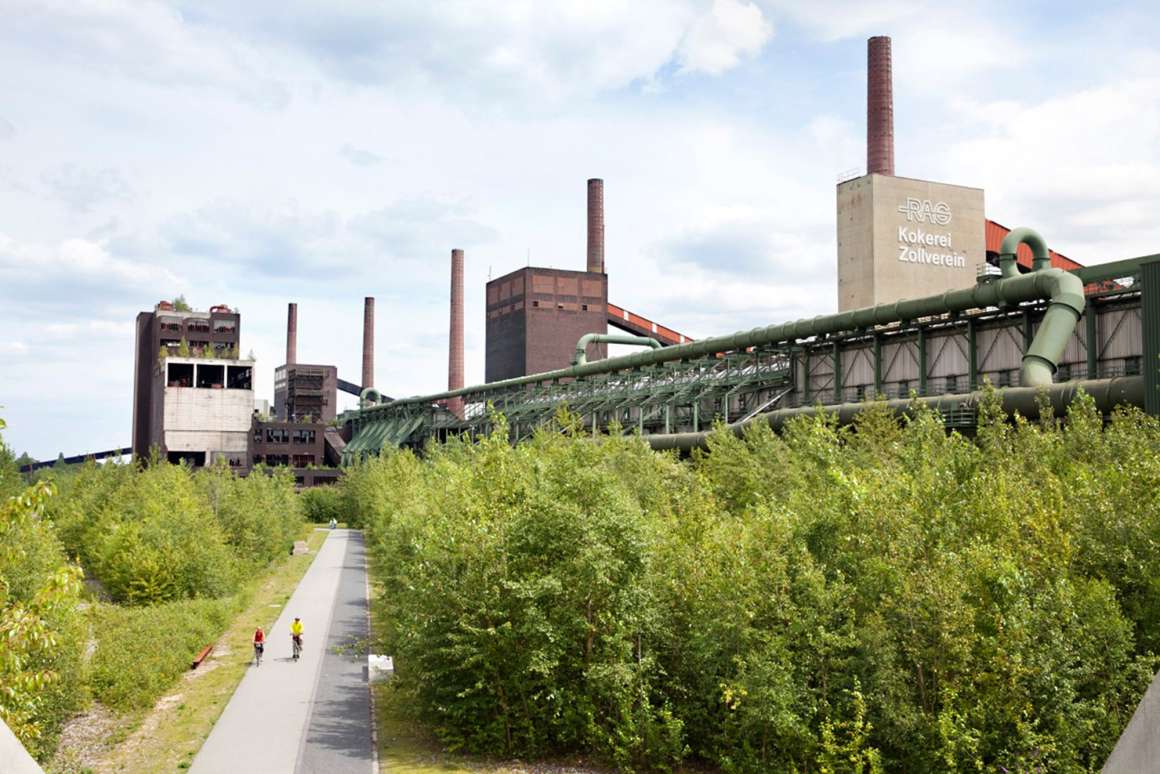
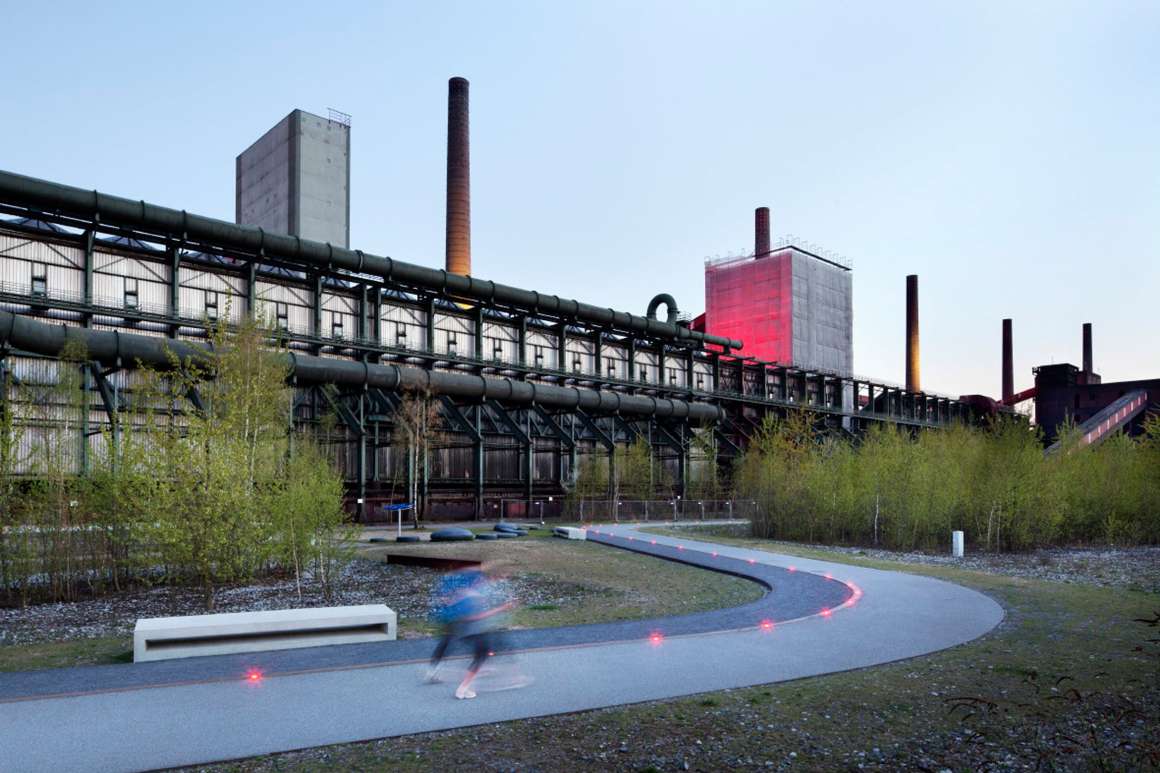
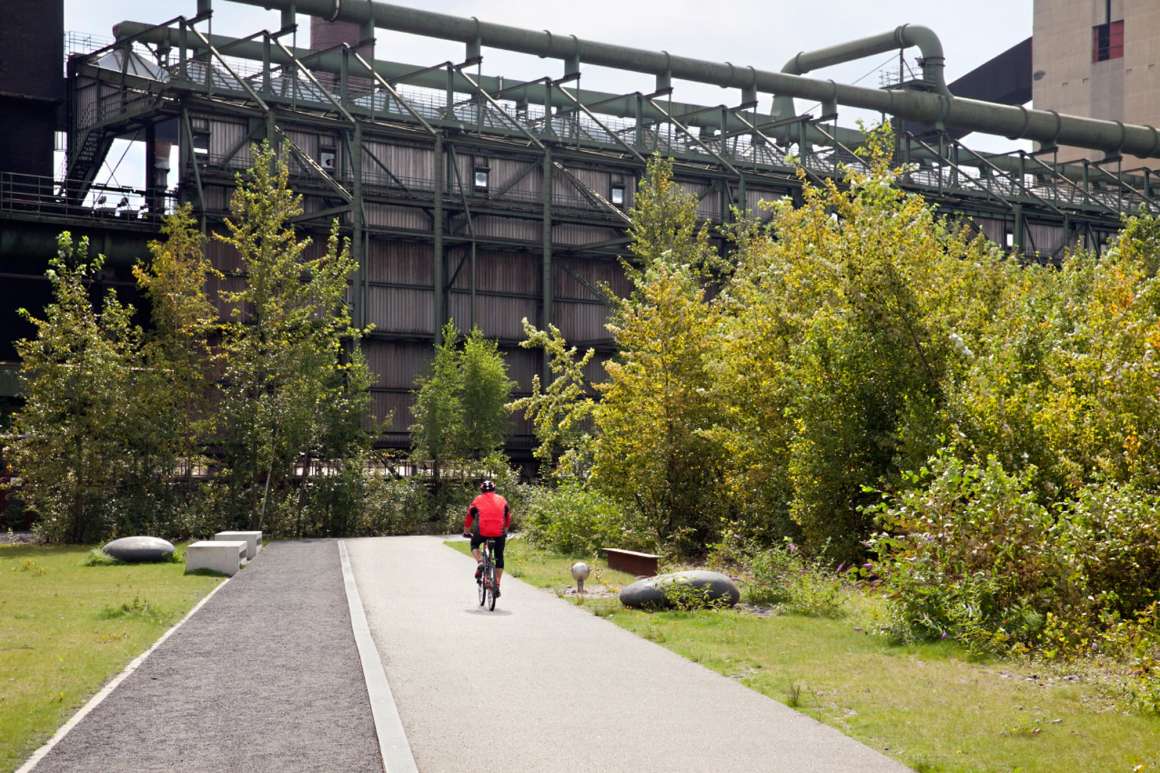
从维护上来看设计概念,保护现有植被和避免大规模干预这样的柔性手段是相互联系的。鼓励植被自然生长,设计师对现有和将有植被的设计干预是非常谨慎的。因此,煤矿焦化厂公园成为了一个有特殊氛围和能量的地方,易于进行园区的保养和维护,且性价比较高。
With the concept of design by maintenance, the gentle approach to emphasizing the existing vegetation and to dispensing with any large intervention is linked. The vegetation is given time and calmness to develop naturally, and any potential intervention in the existing and future vegetation is being executed very carefully. Therefore, Zollverein became a place that develops a special atmosphere and energy out of itself. The cautious care and maintenance is at the same time easy to be arrangeable and practicable, and relatively cost-effective.
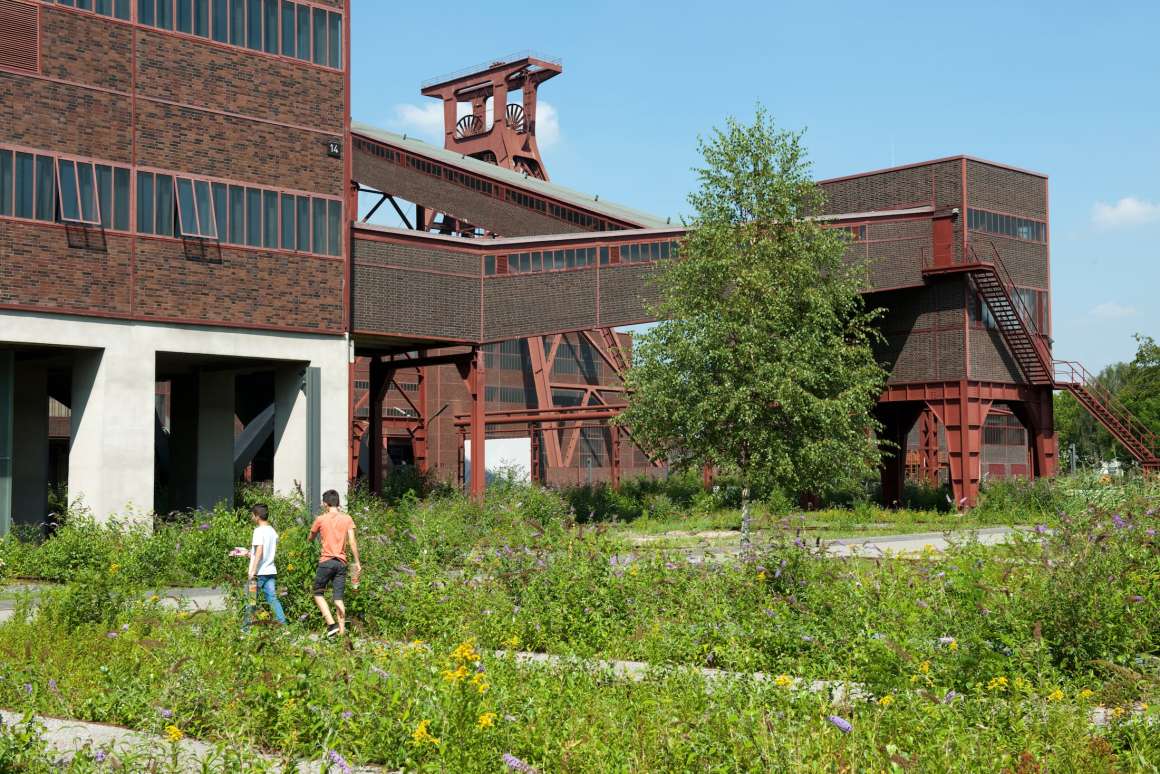
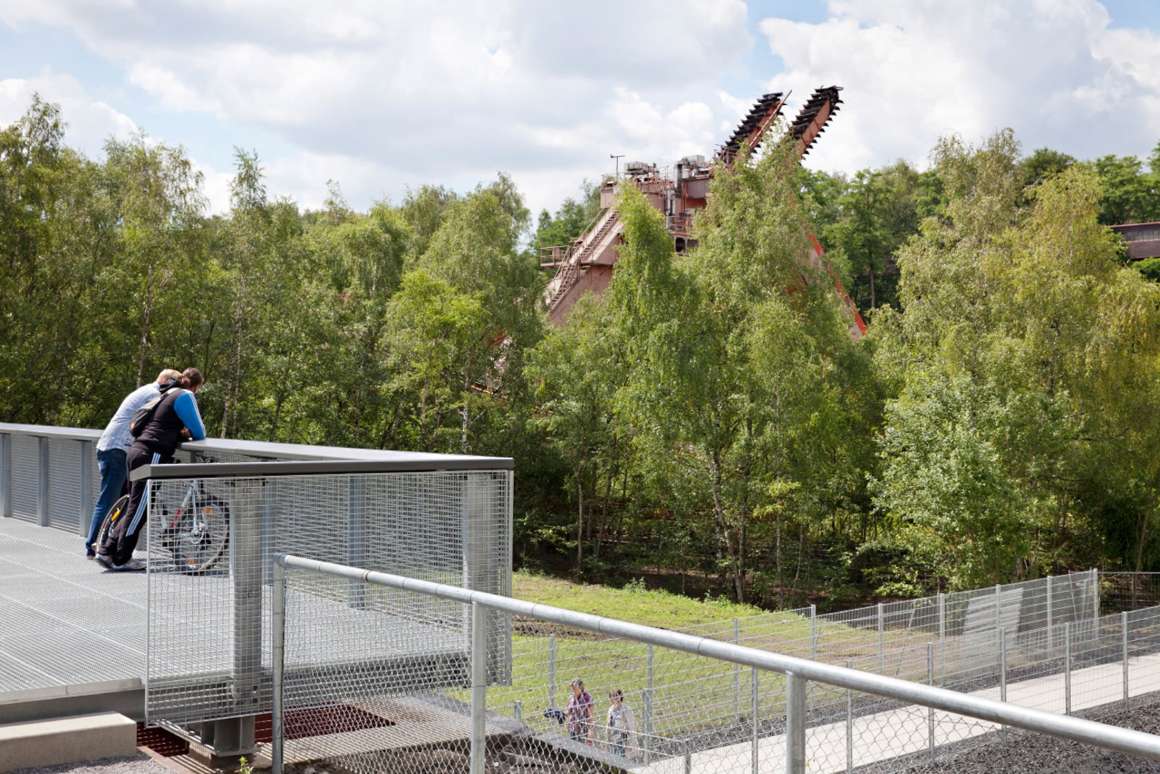
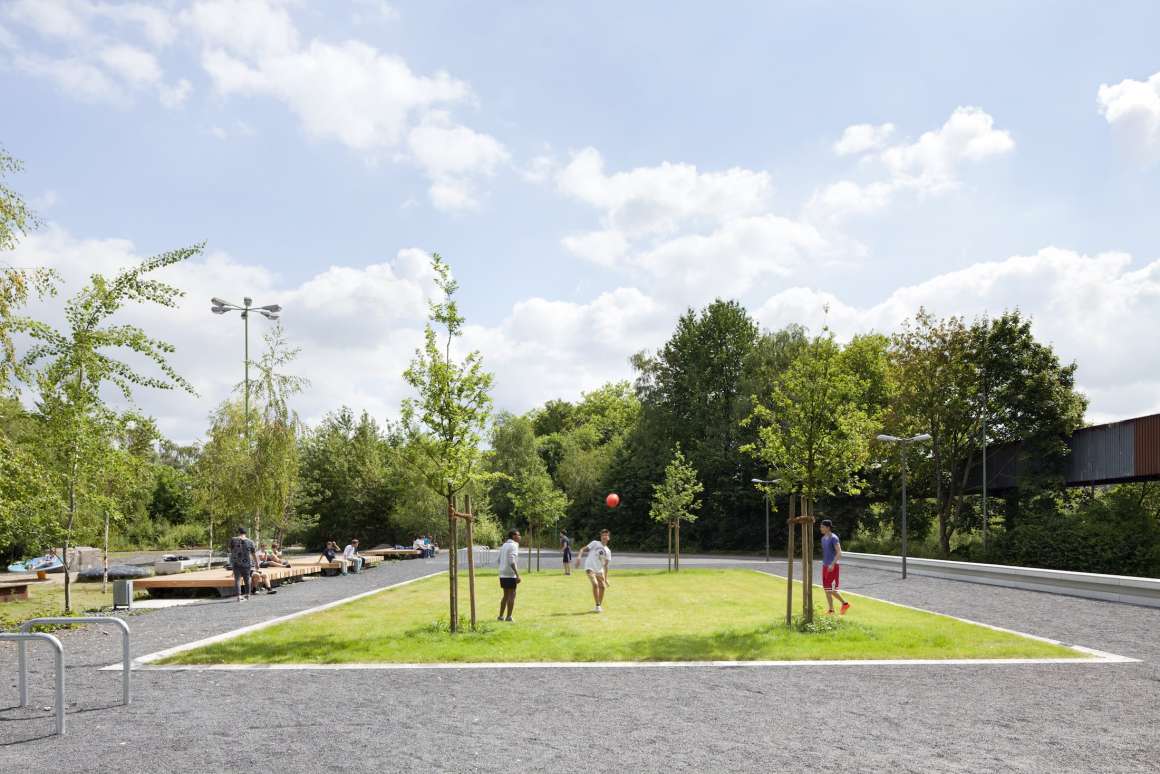
作为世界文化遗产,煤矿焦化厂对埃森市和鲁尔区有着非常高的辐射度和吸引力。场地的前景是让人印象深刻的煤矿工厂,低调的开放空间会对建筑产生恰到好处的影响,它们使场地更加有形。煤矿焦化厂公园是一个特殊的开放空间,营造了独特的体验感,公园与煤矿工厂一起,吸引了游客和当地居民前来游赏。
With its status as world heritage site, Zollverein has a very high radiance and attraction for the city of Essen and the Ruhr region. At the foreground is the impressive industrial architecture of the mine plant. The open spaces have an unobtrusive look which creates a surface to take an appropriate effect on the architecture; they complement the ensemble to a formal framework that makes the dimensions of the site tangible. Zollverein Park is an exceptional open space, which offers a unique experience with its complex offer of open spaces in conjunction with the mine facility, and attracts tourists and local residents equally.

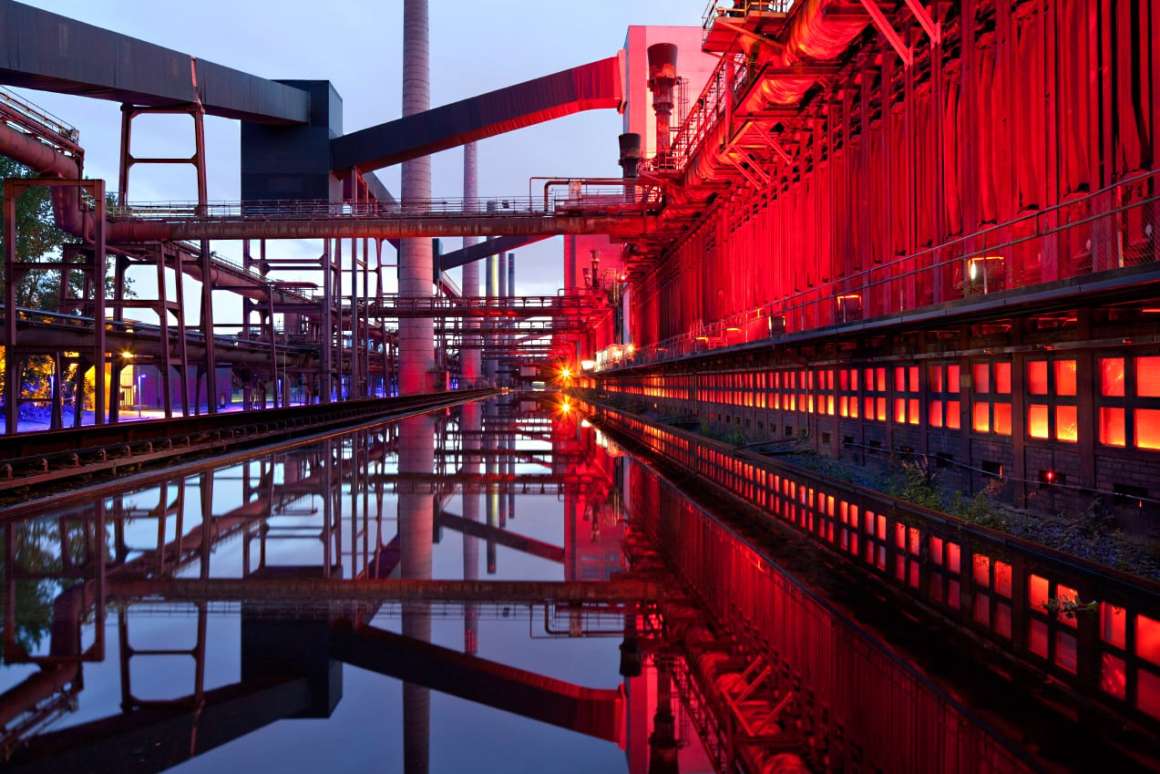
▼总平面图 Plan
景观设计: Planergruppe
合作方:
Obervatorium(荷兰鹿特丹)——艺术
F1stdesign(德国科隆) ——定位系统
Licht Kunst Licht(德国波恩)——灯光设计
上位规划:
Zollverein总体规划——OMA/ 雷姆·库哈斯(荷兰;2002年)
Zollverein工业总体规划——Agence Ter/ 亨利·巴瓦(德国;2003年)
项目地点: 德国埃森
设计年份: 2005 至今
建成年份: 第一阶段2005 – 2006年;第二阶段2007 – 2009年;第三阶段 2010 – 2014年;第四阶段2016 – 2020年
Landscape Architect: Planergruppe GmbH Oberhausen (Germany)
in cooperation with:
Obervatorium, Rotterdam (The Netherlands) – arts
F1stdesign, Cologne (Germany) – orientation system
Licht Kunst Licht, Bonn (Germany) – light design
on basis of:
Masterplan Zollverein by OMA/ Rem Koolhaas (The Netherlands; 2002)
Masterplan Industrielandschaft Zollverein by Agence Ter/ Henri Bava (Germany; 2003)
Project location: Essen/ Germany
Design year: 2005 – today
Year Built: 1. BA 2005 – 2006; 2. BA 2007 – 2009; 3. BA 2010 – 2014; 4. BA 2016 – 2020
更多 Read more about: Planergruppe


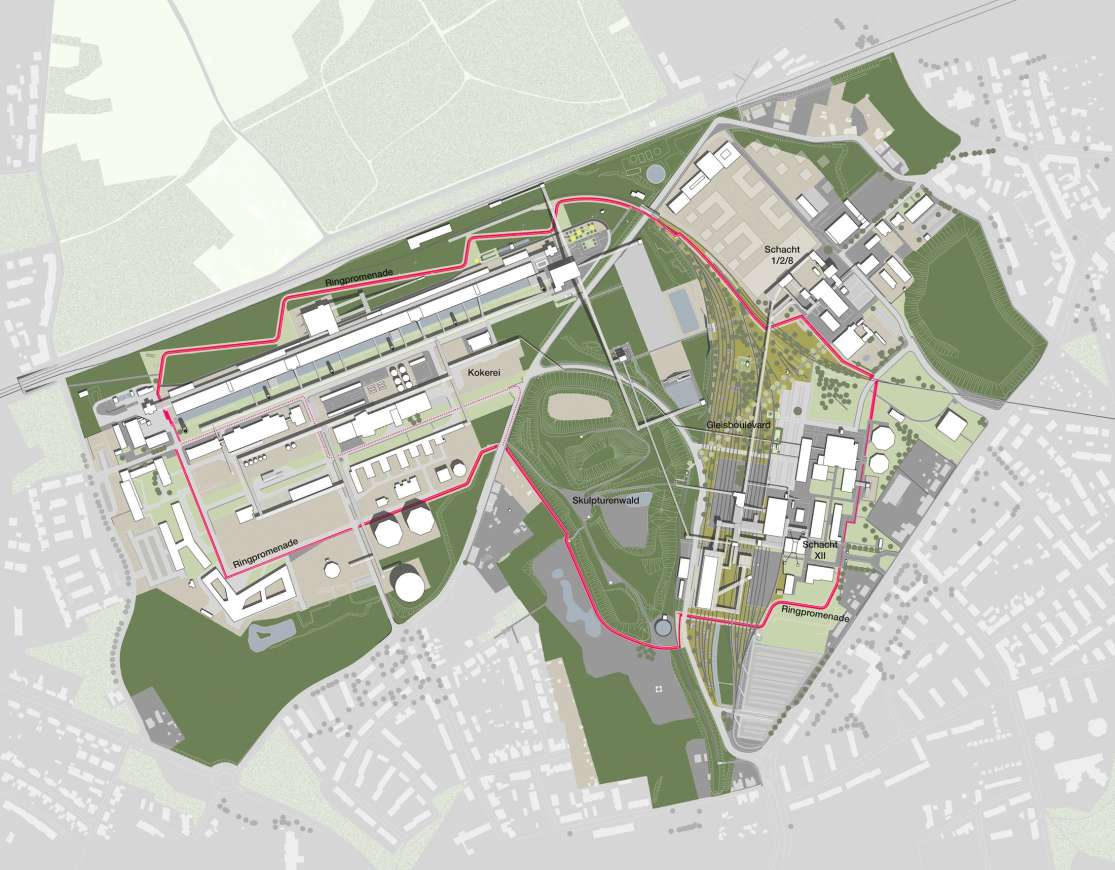


0 Comments